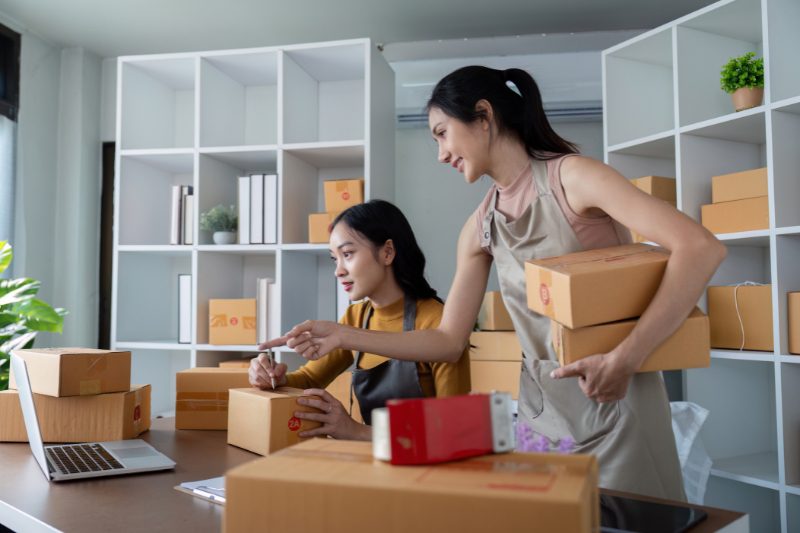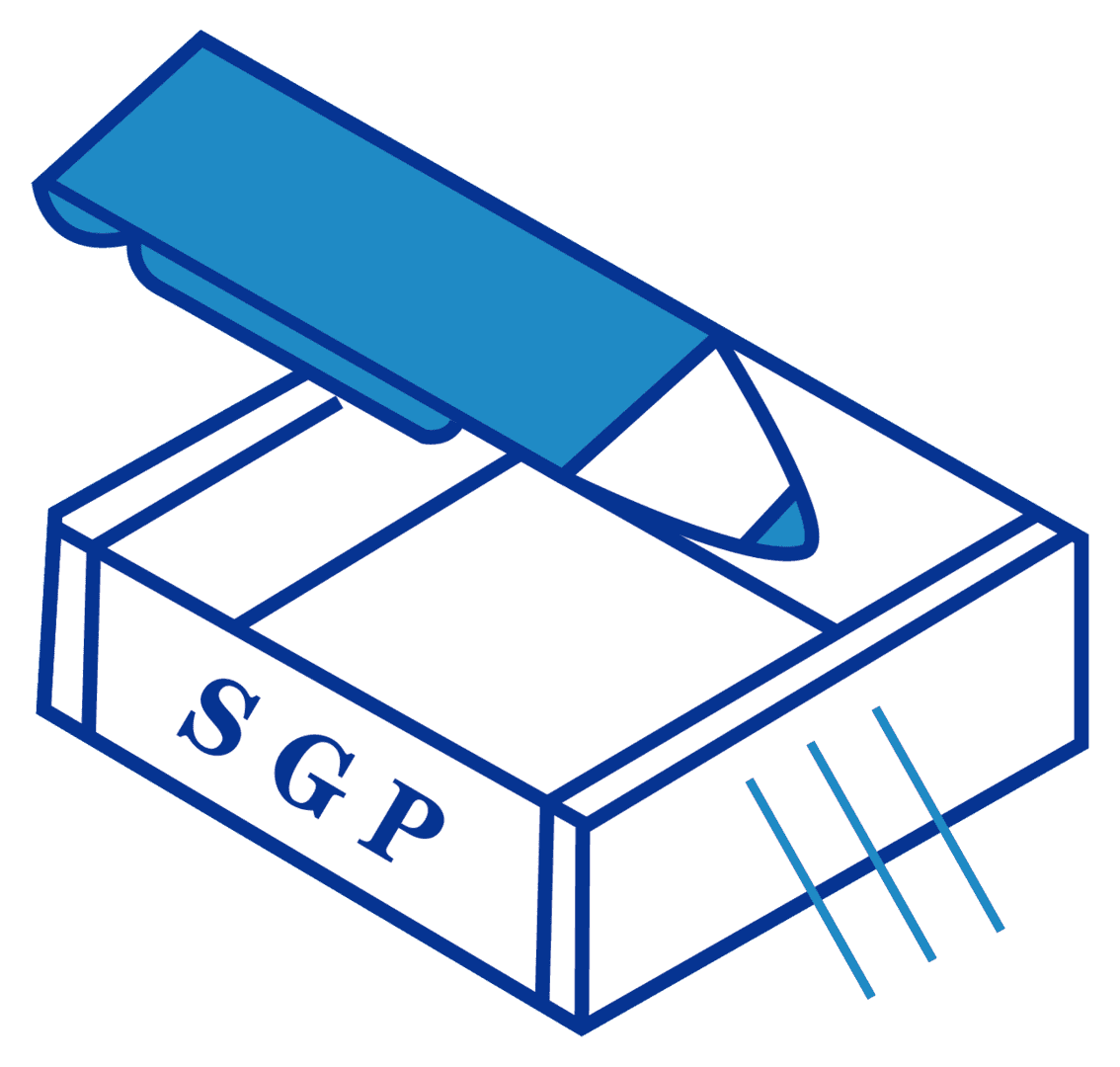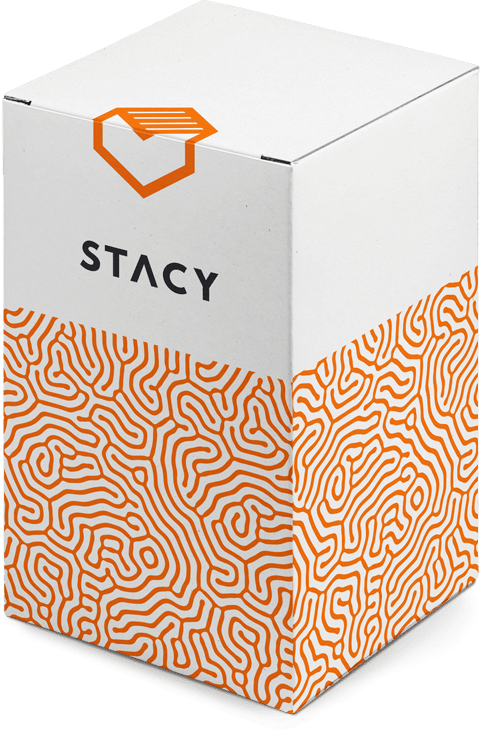
How To Optimize Your Order Fulfillment Process ASAP

As competition in the e-commerce landscape heats up, an efficient and effective order fulfillment process has never been more crucial.
Picture this: 38% of online shoppers will abandon an order if it takes more than a week to arrive at their doorstep — as per Ready Cloud.
In addition, 69% of online shoppers won’t do business again with a retailer if their order isn’t fulfilled within 2 days from the promised date.
And did I mention that 63% of online shoppers will avoid hitting the “Confirm Order” button if they feel the shipping fee is excessive?
So, what’s the gist behind all these revelations?
It’s simple: A meticulously optimized order fulfillment process is now a big deal for the survival of any business in the current competitive market.
The way to achieve that? Well, that’s what this article is all about.
In this article, we’ll see how one can attain an optimized order fulfillment process. We’ll walk through every step of the order fulfillment procedure, right from order placement to delivery, clearly highlighting optimization techniques to deploy in each of the steps for a more efficient and effective order fulfillment process.
Hence, whether you’re learning the ropes of running a successful business, or maybe you’re a seasoned entrepreneur seeking to gain a competitive edge over your peers through a well-optimized order fulfillment process, this guide should be your secret weapon, so read on!
What Is Order Fulfillment Process?
Before we dive into examining some of the best order fulfillment optimization techniques you can embrace, it’s imperative that we first knock off the basics.
So, what is the order fulfillment process?
Well, in simpler terms, order fulfillment entails all the activities that take place between the time when a customer places an order of a product and when they receive the product ordered.
The process involves multiple processes including:
- Order Receipt
- Order Processing
- Inventory Management
- Picking and Packaging
- Shipping and delivery confirmation
Now, when we talk about optimization in the order fulfillment process, it aims at delivering the products ordered by customers within the shortest time possible, at the lowest cost attainable, and to the customer’s maximum satisfaction.
Assessing The Efficiency of Your Current Fulfillment Process
Before you roll out the order fulfillment optimization campaign, it’s paramount to first get a picture of your current performance in that area. You want to know what you’ve been doing as you ought to, areas where you’ve been going off the mark, and whether or not it’s the right time to proceed with the campaign.
To do that, you need to assess your current fulfillment process.
Here’s how to do that:
- Analyze your order volume. How have customer orders been flowing in recently? Have you registered more orders recently? If yes, then that’s a good sign that it’s time for you to start optimizing.
- Evaluate your inventory management process. Are you having difficulties keeping track of your stock levels and replenishing when necessary? If so, then that could be some of the early tell-tale signs that your current order fulfillment process can be made more efficient.
- Measure lead time. This is the time between order placement by a shopper and delivery of the product ordered. Measuring this time can help you determine the efficiency level in the fulfillment process.
- Evaluate customer feedback on your delivery process. Have you noticed any recurring complaints or concerns in customer feedback? In case there are, that’s another sign that there’s room for more efficiency in your order fulfillment.
- Reverse Logistic Strategy. A well-designed strategy for reverse logistics is essential in managing returns and waste, as it is one of the foremost drivers for a more agile, lean, and efficient supply chain. This kind of holistic approach boosts business performance while marching toward sustainability goals—an important implication in modern supply chain management.
These are just some of the key performance indicators (KPIs) that you should assess when evaluating your current fulfillment process. Of course, there are many others that may be specific to your business model and industry.
For instance, if you’re in the food and beverage industry, you may want to assess metrics such as the freshness of products upon delivery, packaging quality, and other parameters relevant to that industry.
Optimizing Order Receipt
When a customer places an order, that’s when the order fulfillment journey begins. The order reflects on the retailer’s end, who then responds to the shopper by sending a confirmation notification.
Now, as the initial phase of order fulfillment, sales receipt can greatly impact the overall performance of the entire process, so it’s important to incorporate efficiency right from this point.
Here are some tips for optimizing order receipts:
Automate The Process
The first thing you will want to do as a way to optimize order receipt is to make good use of technology in receiving and acknowledging the order.
Unlike manual order receipt processes where orders are placed and confirmed manually, automation brings speed and accuracy, eliminating some of the inefficiencies associated with the traditional order receipt processes.
Now, there are numerous ways to automate order receipt depending on the channel used to place the order, including the integration of AI into this process.
For instance, if most of your orders come through email, you can consider setting up automated email notifications that send back an acknowledgment note using bulk email services immediately after an order is received.
Similarly, if most of your sales come from online marketplaces like Amazon or eBay, consider integrating your store with these platforms. Doing this will help ensure that once an order is initiated, it reflects on your end automatically without manual input. This also leads to improved time management, allowing you to focus on other critical business tasks
Offer Multiple Channels For Placing Orders
How many channels can online shoppers place their orders? Are there several of them or have you stuck to one channel of order placement? In today’s business environment, flexibility is key.
Customers want to have an order placement process that’s as seamless and convenient as possible, and availing multiple channels for that is a big plus.
Harvard Business Review reports that 73% of customers prefer shopping through more than one channel, with a different study showing that 83% of shoppers channel-hop across a minimum of 2 channels when shopping.
That’s to say, you can’t afford to neglect the essence of omnichannel. Some of the popular channels that you offer include website ordering, phone call ordering, live chat ordering, email ordering, and of course, social media ordering.
Ensure that all the channels you offer are optimized for speed and accuracy and that they’re integrated with your order receipt process for more streamlined processing.
Optimizing Inventory Management
Inventory management is one of the crucial areas that you must get right if you have to run a well-optimized order fulfillment process. Unless you properly manage your inventory, chances of delayed shipment are very likely, a mistake whose repercussions could be lethal to your business.
In a survey conducted, 34% of businesses admitted to have ever mistakenly sold a product that was already out of stock. So, it’s a quite common mistake that you should avoid falling into it at all costs. To ensure that, have a well-optimized inventory management system in place.
Here are some of the best practices to optimize your inventory management process:
Have A Real-Time Inventory Tracking

Gone are the days when businesses needed to keep physical records of their inventory. Nowadays, technological advancement has made it much easier for warehouses and distribution centers to keep tabs on inventory levels.
Currently, there are several inventory management software that can help you with maintaining accurate stock records. Fishbowl, Cin7, and Stitch Labs are just a few of them.
The goal of having a tracking system is to maintain an optimal amount of inventory. You don’t want to keep a lot of inventory because it will mean spending more on holding costs and you also don’t want to keep too little because it might lead to occasional stockouts, delayed deliveries, and lost sales. Today, AI algorithms can analyze historical sales leads data, customer demographics, and even social media trends to predict future demand for specific products. This allows companies to optimize inventory levels and avoid stockouts or excess inventory.
Use Reliable Demand Forecast Systems
Demand is dynamic, making it a bit difficult to tell how much inventory you’ll need to meet customer needs. That’s where the need to invest in a proper demand forecasting tool comes into place.
A demand forecast system can help you estimate how much demand you’re anticipating in the future, allowing you to adjust your stock levels accordingly.
Usually, a good forecast system provides reliable insights and must take into consideration historical data, customer buying patterns, market trends, and other relevant factors when projecting how much inventory you need to keep.
Make Use of Safety Stock
No demand forecast system is 100% accurate. Hence, you need to have a buffer stock for smooth operations during uncertain times.
But then, when keeping this type of stock, be careful so you don’t be overambitious and end up spending more on unnecessary holding costs. Keep what’s just enough to cushion your operations in moments of stockouts or supply chain disruptions.
So, what is the sweet spot?
Well, we don’t have a one-size-fits-all kind of answer to that question. It depends on the type of business you’re running.
However, for most businesses, a safety stock equivalent to 50% of the average amount of inventory used during a reorder lead time works just fine. But of course, you have to keep adjusting this number depending on several factors like demand fluctuations, lead time variability, and other factors.
Optimizing Order Picking
Once an order has registered on your system and you have acknowledged receipt, the next move is usually to locate the required product from your inventory and pick it up from the shelves for preparation awaiting shipping. This process is what’s referred to as order picking.

Now, similar to order receipt, how quickly you can pick up the required items from your inventory can inject some degree of efficiency into your overall order fulfillment process, ensuring that you deliver products within the expected timeframe.
The cost of order picking accounts for 55% of all warehouse operation costs. That means if you can implement strategies to make the process more efficient, you can significantly cut on operation cost, making it possible to offer your products at a lower cost than the competition.
Here are some of the ways you can improve order picking:
Layout Your Warehouse Properly
The layout of your warehouse has a significant impact on how smoothly or inefficiently your order-picking process will run.
If you want to streamline inventory flow around the warehouse, you must ensure you have the ideal layout in place. Otherwise, it will be difficult for your employees to locate the required products, consequently leading to delays in order fulfillment.
That said, how can you have a well-optimized warehouse layout? Here are several tips to help you choose the best warehouse layout:
- Keep the frequently bought items at the most accessible spots.
- Have clearly labeled aisles
- Use vertical storage options
- Minimize the need for movement
- Ensure safety measures are in place
Also, remember to regularly analyze order data. Doing this will help you know if there are changes in the products ordered more often, helping you know whether or not changing the placement of items is necessary.
Invest In Order Picking Automation Tools
You should also consider embracing automation in order picking. The ongoing technological revolution has seen the emergence of automated order-picking innovations like conveyor systems, automated storage and retrieval systems, automated guided vehicles, and others. Integrating a Warehouse Management System (WMS) enhances these technologies by optimizing picking routes, improving inventory tracking, automating task assignments, and reducing errors through real-time data and analytics.
These tools greatly speed up the process of locating and moving products from the warehouse shelves to the packing area, making it much easier for employees to fulfill orders accurately and promptly.
Implement a First-In-First-Out (FIFO) System
While the FIFO system may not directly impact order picking speed, it can significantly affect order accuracy and customer satisfaction — 2 essential elements when we’re talking about order fulfillment.
With the FIFO system, it means that the items that came in first from the supplier are the first to leave to the customer.
In other words, when a customer orders for a product, if running the FIFO system, the item to pick will be the oldest among all of its kind. This technique helps eliminate product expiration issues, helping you avoid losses while simultaneously ensuring that customers receive fresh products every time.
When each product you’re sending to the customer is within the expiration date, returns are very unlikely, ensuring customer satisfaction and loyalty.
Pick The Right Picking Method
Finally, if you’re interested in optimizing order fulfillment, you also have to ensure that you’re using the ideal picking method for your operations.
Now, there are various order picking methods that you can deploy:
- Wave Picking: This order picking system works by grouping orders with similar products and then picking these items in batches.
- Waveless Picking: It’s a real-time order picking method whereby you don’t have to necessarily pile up similar orders to make up a batch before picking.
- Small Batch Picking: This technique involves grouping small orders together as they come to help reduce travel time. It’s ideal for operations where there’s a high mix of small orders.
- Zone Picking: This order picking method involves dividing the warehouse into different zones before assigning workers to pick items from specific zones. You can combine this picking method with another for greater efficiency.
- Discrete Picking: This method involves picking orders individually without having to group them together. It’s ideal for large, high-value, or custom orders where accuracy is of higher essence. \
As a business, ensure that you choose the most appropriate picking method for your operations to ensure that you achieve order accuracy and speed at the same time.
We don’t have a one “perfect” picking method that works for every business, which is why you must first analyze your operations and choose the method that best fits your needs.

Conclusion
Optimizing the order fulfillment process is one of the things you need to ensure if you want the success and growth of your venture. By optimizing order receiving, order processing, and shipment processes, you can achieve an efficient order fulfillment process that best delivers customer satisfaction.
And remember, you must stay updated with advancements in technology and consumer needs for you to continuously improve and stay ahead of the curve. Also, don’t downplay the essence of incorporating sustainability in order fulfillment as well as the importance of establishing good long-term relationships with your shipping partners. It can help save money.
Printing process:
Product Details & Craftsmanship
Close-up photos tell the story of quality:
Surface & finish: no burrs, no flash, consistent color tone
Foil stamping box:
Black tear box:
Gift box:
If you have any questions or hesitations, please feel free to reach out to us directly.
Email:
pony@gift-packaging.net
barry@gift-packaging.net
WhatsApp:
+86 131 9246 6617
+86 158 7547 2582






